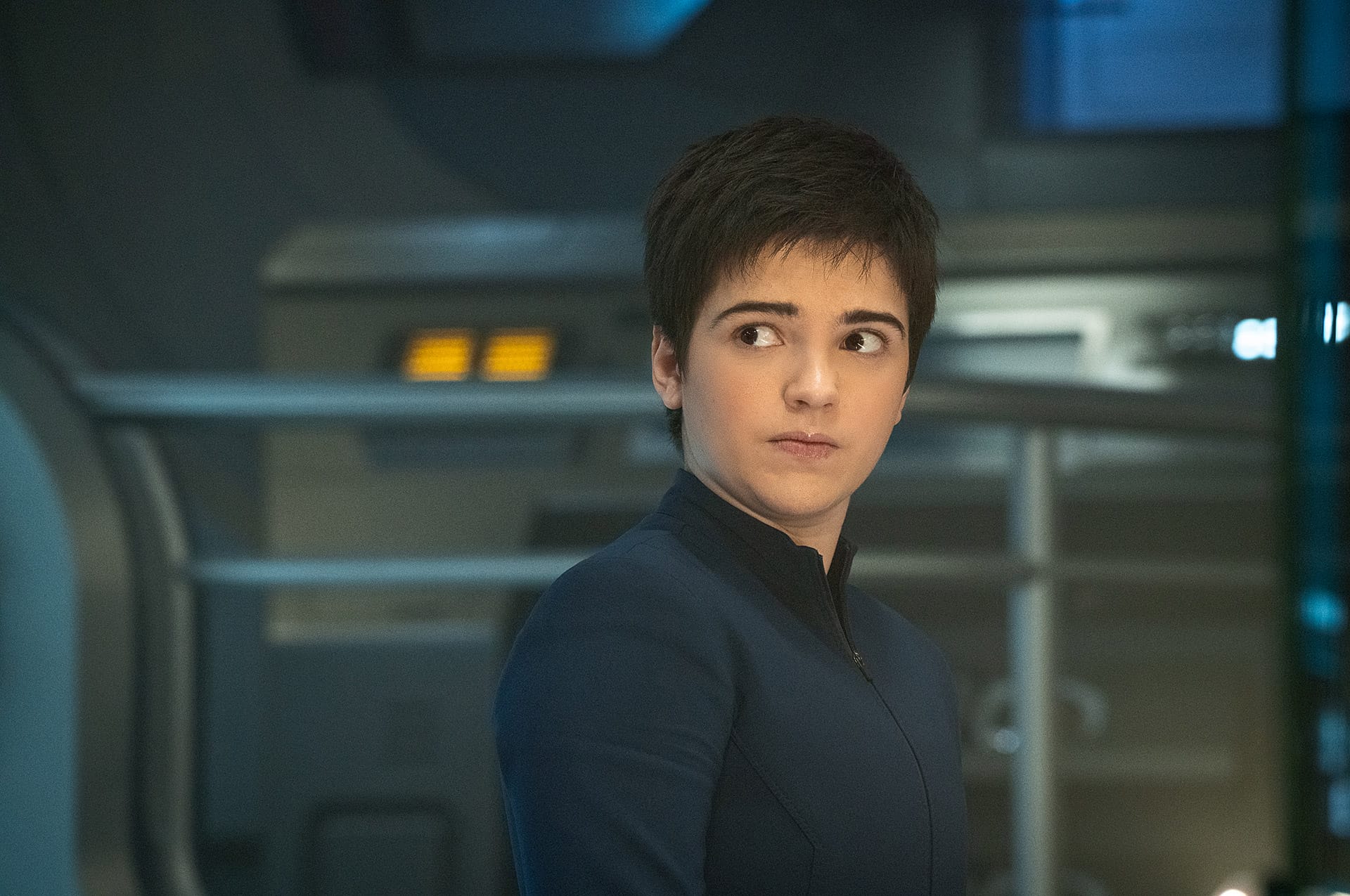Join GLAAD and take action for acceptance.
Trending
- RECAP: Supreme Court to Rule on Protections Against Discredited and Unsafe Conversion “Therapy” Practices on LGBTQ Youth
- We All Could Use Some Queer Joy! Be a Part of The Skin Deep + GLAAD’s New Collab
- Facts and Action for Banned Books Week
- Write It Out! Launches Annual Campaign to Uplift People Living with HIV Through Playwriting
- GLAAD Gaming Announces New Queer Emerging Developers Program
- Finding Yourself Begins With Celebrating Others’ Differences
- Must-See LGBTQ TV: October Premieres and Returns!
- Fact Sheet: Landmark Supreme Court Case Regarding Protections Against So-Called Conversion “Therapy” for Youth
Where We Are on TV 2023-2024

There were more LGBTQ women than men on broadcast for the fifth year running. Of the 64 LGBTQ characters on primetime scripted broadcast, 35 (55 percent) are women, 27 (42 percent) are men, and two (three percent) are nonbinary. Of these characters, 20 (31 percent) are lesbians, 10 (16 percent) are bi+ women, and five (eight percent) are queer women. One of the bi+ women is also trans. There are 24 (38 percent) gay men, two bi+ men (three percent) and one straight trans man (one percent). There are two nonbinary characters on broadcast, both who have undefined sexual orientations.
The percentage of both bi+ men and women decreased year over year, and there was a slight decrease in lesbian representation as well. Trans men, women, and nonbinary characters all decreased from the previous study, both in number and percentage.
For the past four years, there has been a slant toward women characters on cable. This year, the numbers have dramatically shifted to favor men. Of the 77 LGBTQ characters counted on primetime scripted cable, 27 (35 percent) are women, 47 (61 percent) are men, and three (four percent) are nonbinary. Out of those characters, 19 (25 percent) are lesbians, six (eight percent) are bi+ women, one (one percent) is a queer woman, and one (one percent) is a straight trans woman. Nearly half of all LGBTQ characters on cable are gay men, at 35 out of 77 (46 percent). There are additionally 12 (16 percent) bi+ men. There are no trans men counted on cable this year. There are three nonbinary characters, two of whom are bi+ and one who has an undefined sexual orientation.
Year over year, there was a large decrease in bi+, lesbian, and trans women, as well as a decrease in trans men and nonbinary characters. The only demographic that increased was cisgender men.
On scripted original streaming series, there is a slight lean toward women, with 158 (48 percent) of the 327 LGBTQ characters being women, along with 150 (46 percent) men, and 19 (six percent) nonbinary characters. Of those same characters, 79 are lesbians (24 percent), 53 are bi+ women (16 percent), and 19 are queer women (six percent). Of the nine trans women on streaming, four are straight, two are queer, one is bi+, and two have undefined sexual orientations. There are 108 (33 percent) gay men on streaming, 24 (seven percent) bi+ men, and 15 (five percent) queer men. There are four trans men counted on streaming, three queer and one straight. Of the 19 nonbinary characters counted on streaming, nine are queer, four are bisexual+, one is gay, and five are undefined.
There was a welcome increase in nonbinary characters on streaming year over year. There was a decrease in both gay men and lesbian representation, though bi+ representation remained steady. There was also a slight decrease of trans characters. There was a significant increase of characters who are queer and don’t identify with any other label.
Across all platforms, men very slightly outnumber women. Of the total 468 characters counted in the tally, 220 (47 percent) are women, 224 (48 percent) are men, and 24 (five percent) are nonbinary. There are 118 (25 percent) lesbian characters, 69 (15 percent) bi+ women, and 25 (five percent) queer women. There are 11 trans women (two percent) counted across all platforms; five are straight, two are bi+, two are queer, and two have an undefined sexual orientation. There are 167 (36 percent) gay men, 38 (eight percent) bi+ men, and 15 (three percent) queer men. Of the five trans men (one percent of all LGBTQ characters) counted across all platforms, three are queer and two are straight. Of the 24 nonbinary characters counted this year, nine are queer, six are bisexual+, one is gay, and eight have undefined sexual orientations.
Overall, this is a decrease in percentage of LGBTQ women, with slight increases for LGBTQ men and nonbinary characters. Lesbian women saw a decrease of five percentage points, while the percentage of bi+ women and trans women slightly decreased. That said, there was an increase in the percentage of women who identify exclusively as queer. The percentage of gay, bi+, and queer men slightly increased while trans men significantly decreased.
Gender of LGBTQ characters on Broadcast
No Data Found
No Data Found
Gender of LGBTQ characters on Cable
No Data Found
No Data Found
Gender of LGBTQ characters on Streaming
No Data Found
No Data Found
Gender of total LGBTQ characters
No Data Found
No Data Found
Table of Contents
Share this
View Past Years’ Reports
MEASURE THE MOVEMENT
Your gift allows us to track the impact of our work, helping us better understand the state of acceptance and address the gaps with advocacy — like pushing for more trans representation in movies.
More Publications from GLAAD
2025 Social Media Safety Index The annual GLAAD Social Media Safety Index & Platform Scorecard…
2024 Visibility Perceptions in AdvertisingIn this report, we learn directly from industry leaders how (or…
GLAAD’s Anti-LGBTQ Extremism Reporting TrackerDisclaimer: Readers should be aware that the following report contains details…
2024 Studio Responsibility IndexThe GLAAD Studio Responsibility Index (SRI) maps the quantity, quality and diversity…












